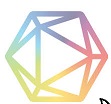Multimedia Development E-Flashcard in Class XI Vocational School Business Economics Subjects
Abstract
Keywords
Full Text:
PDFReferences
S. (2024). Lisnaini, W., Hendri, N., Novrianti, & Anugrah, “Pengaruh penggunaan game edukasi terhadap motivasi belajar peserta didik kelas XI di SMA Negeri 1 Kabun.,” Indo-MathEdu Intellectuals Journal, 5(5), 6293–6300. https://doi.org/10.54373/imeij.v5i5.1987, 2024.
A. S. M. (2023). Amadi, “Pendidikan di era global: Persiapan peserta didik untuk menghadapi dunia yang semakin kompetitif.,” J. Ilmu Kependidikan, 17(2), 153–164. http//ejournal.hamzanwadi.ac.id/index.php/edc/article/view/9439, 2023.
W. (2020). Maiziani, F., & Amilia, “Pemanfaatan gadget oleh anak usia dini pada era digital native dalam rangka pemerolehan bahasa Inggris.,” E-Tech J. Ilm. Teknol. Pendidikan, 8(1). http//ejournal.unp.ac.id/index.php/e-tech, 2020.
R. (2017). Darmansyah, D., & Darmansyah, “Strategi pembelajaran. Bukittinggi: Cv. R,” umahkayu Pustaka Utama., 2017.
E. (2013)., “Metodologi penelitian pendidikan.,” Depok PT. Raja Graf. Persada., 2013.
D. (2020). Kustandi, C., & Darmawan, “Pengembangan media pembelajaran: Konsep & aplikasi pengembangan media pembelajaran bagi pendidik di sekolah dan masyarakat.,” Jakarta: Kencana., 2020.
M. (2024). Yanti, S., Arnilis, Y., Ningsih, S., & Murthada, “Pemanfaatan Aplikasi Canva Sebagai Inovasi Pembelajaran Mahasiswa Pada Mata Kuliah Media Literasi ICT Dan Media Pembelajaran Ekonomi.,” Dharmas Educ. J. (DE_Journal), 4(3), 905–914. https//doi.org/10.56667/dejournal.v4i3.1300, 2024.
& A. (2016). Jalinus, N., “Media & Sumber Pembelajaran.,” Jakarta: Kencana., 2016.
C. (2022). Aziza, O. M., & Yulia, “Efektivitas media flashcard untuk meningkatkan pemahaman kemandirian belajar peserta didik.,” J. Ilmu Pendidikan, 4(4), 6003–6014. https//edukatif.org/index.php/edukatif/index, 2022.
A. (2015). Arsyad, “Media Pembelajaran (Revisi).,” Rajawali Pers., 2015.
M. H. (2022). Akbar, “Flash Card Sebagai Media Pembelajaran Dan penelitian.,” Sukabumi CV. Haura Utama., 2022.
O. (2023)., “Research And Development (R & D) Penelitian yang Inovatif dalam Pendidikan.,” Dharma Acariya Nusant. J. Pendidikan, Bhs. Dan Budaya, 1(1), 86–100. Diperoleh dari https//api.semanticscholar.org/CorpusID271986179, 2023.
N. S. (2018). Sukmadinata, “Metode Penelitian Pendidikan.,” Bandung: Remaja Rosdakarya., 2018.
A. (2024). Anggermawan, Y. P., Wardhono, W. S., & Suharsono, “Pengembangan E-Modul Mata Pelajaran Informatika Materi Sistem Komputer dan Komponen Penyusunnya dengan Model Pengembangan Borg & Gall (Studi Kasus: SMA). Jurnal Pengembangan Teknologi Informasi dan Ilmu Komputer, 8(3).,” Diperoleh dari https//repository.ub.ac.id/id/eprint/216298/, 2024.
K. (2023). Purba, “Penelitan dan Pengembangan (Research and Development).,” Bandung: Penerbit Yrama Widya., 2023.
2024. Anisah, F., “Pengaruh cita rasa, packaging design, brand association, dan healthy lifestyle terhadap keputusan pembelian Cimory yogurt squeeze pada masyarakat Kebumen.,” Univ. Putra Bangsa., 2024.
K. (2023). Putra, W. S., & Wanda, “Transformasi pendidikan: Merdeka belajar dalam bingkai pendidikan Indonesia di era Society 5.0.,” Model. J. Progr. Stud. PGMI, 10(4), 810–817. http//jurnal.stitnualhikmah.ac.id/index.php/modeling/article/view/2191, 2023.
S. (2018)., “Metode Penelitian Kombinasi (Mixed Methods).,” Bandung Alf., 2018.
T. (2017) Ernawati, I., & Sukardiyono, “Uji Kelayakan Media Pembelajaran Interaktif Pada Mata Pelajaran Administrasi Server. Elinvo (Electronics, Informatics, and Vocational Education). Vol 2.No 2. 204-210.,” Diperoleh dari https//journal.uny.ac.id/index.php/elinvo/article/view/17315, 2017.
R. & S. (2012)., “Pengantar Statistika Sosial.,” Bandung Alf., 2012.
N. (2019). Zagoto, M. M., & Yarni, “Perbedaan Individu Dari Gaya Belajarnya Serta Implikasinya Dalam Pembelajaran.,” J. Rev. Pendidik. dan Pengajaran. Vol 2. No 1. 259-265. Diperoleh dari https//core.ac.uk/download/pdf/287360276.pdf, 2019.
R. R. (1999). Hake, “Analyzing Change/Gain Scores.,” Educ. Res. 28(1), 12-19., 1999.
Y. (2022). Rahayu, R., Iskandar, S., & Abidin, “Inovasi pembelajaran abad 21 dan penerapannya di Indonesia.,” J. Basicedu. https//www.neliti.com/publications/451361/inovasi-pembelajaran-abad-21-dan-penerapannya-di-indonesia, 2022.
DOI: http://dx.doi.org/10.58258/jime.v11i2.8541
Refbacks
- There are currently no refbacks.
Copyright (c) 2025 Rahma Ananda

This work is licensed under a Creative Commons Attribution-ShareAlike 4.0 International License.

JIME: Jurnal Ilmiah Mandala Education (p-issn: 2442-9511;e-issn: 2656-5862) is licensed under a Creative Commons Attribution-ShareAlike 4.0 International License.
Jurnal ini diterbitkan oleh Lembaga Penelitian dan Pendidikan (LPP) Mandala.
Alamat: Jl. Lingkar Selatan, Perum Elit kota Mataram Asri Blok O. No. 35, Jempong Baru, Sekarbela, Kota Mataram NTB.







.png)



